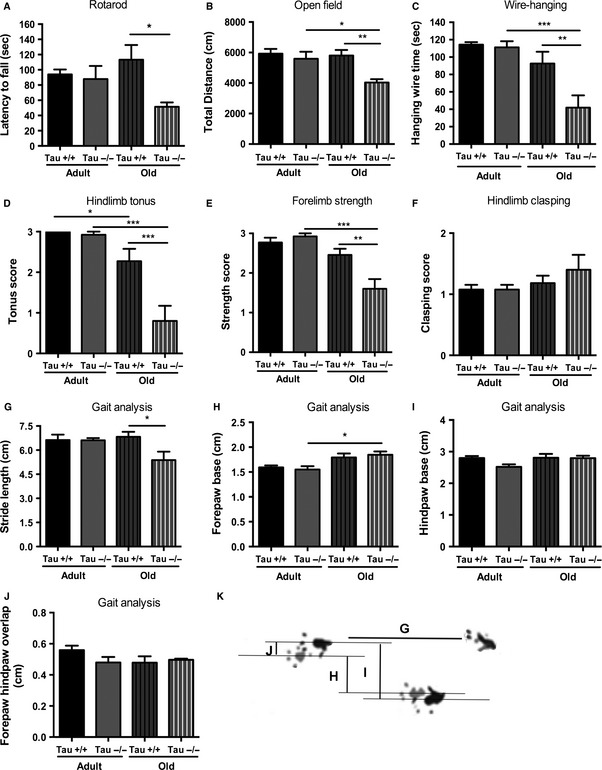Figure 1.

Impaired motor behavior of old Tau−/− animals. Behavioral screening of motor functions revealed that lack of Tau protein led to an age‐dependent motor dysfunction. (A) Rotarod test showed that old, but not adult, Tau−/− animals exhibited reduced latency to fall when compared with Tau+/+ reflecting motor impairment. (B) Total distance travelled in open field was reduced in old Tau−/− when compared with old Tau+/+ and adult Tau−/− animals indicating reduced locomotor activity. (C) Wire‐hanging test assessments showed that old Tau−/− animals differed from old Tau+/+ and adult Tau−/− presenting significantly less hanging time. D‐E) Hindlimb tonus resistance (D) and forelimb strength (E) were severely reduced in old Tau−/− animals compared with old and adult Tau+/+. (F) No changes in hindlimb clasping score between animals of both ages and genotypes. (G–J) Footprinting‐based gait analysis showed that, in contrast to adult animals, old Tau−/− present reduced stride length when compared to old Tau+/+ (G), while no other changes were found between animals of two genotypes. (K) Representative image of animal footprints which were used to calculate the different gait parameters, for example, stride length *(G), forepaw base (H), hindpaw base (I), and forepaw/hindpaw overlap (J). All numeric data are presented as mean ± SEM; *p < 0.05; **p < 0.01; ***p < 0.001.
